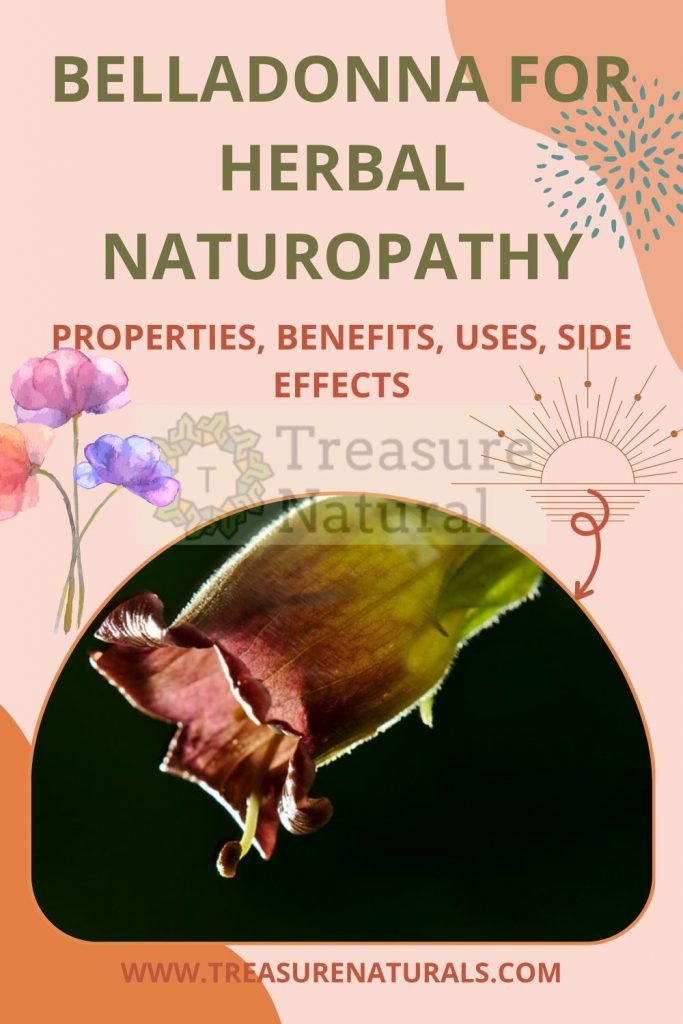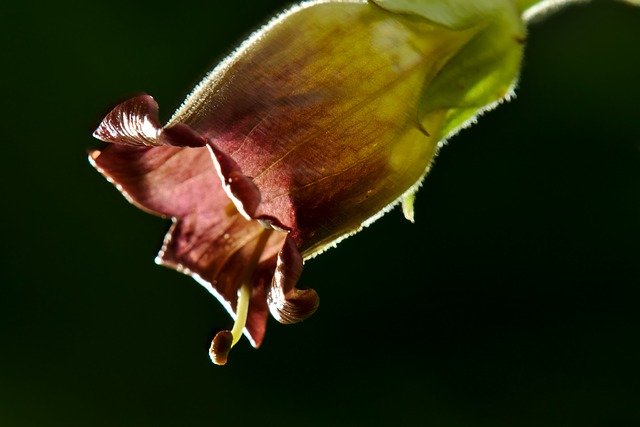
Belladonna has spasmolytic and bronchodilating properties and its constituents are used to dilate the pupils. However, it is a toxic and poisonous plant, no longer used in herbal medicine.
Belladonna is a plant of the Solanaceae family, used for its antispasmodic and bronchodilator action.
Properties of belladonna
Belladonna has parasympatholytic properties (i.e. inhibits the function of the parasympathetic nervous system) and is therefore used against gastrointestinal spasms and as an anticholinergic, only on prescription.
The whole plant is in fact toxic, in particular the berries, for the content of tropane alkaloids (scopolamine and atropine) very dangerous, which represent, if you can say so, the poison of the nightshade.
What is belladonna used for
The leaves of the plant are used for the content of atropine and scopolamine, mainly responsible for the effects of nightshade.
Atropine and scopolamine are in fact able to cause:
- Dilation of the pupils (mydriasis) through paralysis of the sphincter muscle of the iris. From this action derives the name “belladonna”, since in the past the plant was used precisely to dilate the pupils and make the female gaze more seductive.
The alkaloids present in the leaves of belladonna also have the ability to reduce salivary and gastric secretions and the production of sweat and to cause muscle relaxation of the entire digestive system, biliary tract, bladder and bronchi.
Belladonna is therefore used in medicine to reduce acid secretion and gastric motility and promote the healing of the ulcer and for the bronchodilator action, useful for improving pulmonary ventilation in case of excessive bronchial secretion, in the presence of asthma and bronchitis.
Galenic preparations are used to quell coughing, asthmatic attacks, constipation and gastric acidity. Externally they are used against hemorrhoids and fissures, for analgesic action.
At the level of the central nervous system, atropine and scopolamine at high dosages, determine agitation, tachycardia, hallucinations, delirium and insomnia; at low dosages there is a sedative action.
How to use
In medicine, isolated atropine is still used as a pupil dilator and as a muscle relaxant before surgery.
Widespread is also the use of belladona in homeopathy, which uses it for respiratory problems, fever, convulsions, inflammation, delirium and hypersensitivity to noise and bright light.
At one time, belladonna tincture and belladonna extract were also used. Today the herbal and phytotherapeutic use of this plant is obsolete since, being a poisonous plant, the risks related to this remedy outweigh the benefits.
Contraindications of nightshade
Preparations obtained from belladonna alkaloids are considered safe at therapeutic dosages. At high dosages you can experience several side effects including tachycardia, dry mouth, constipation.
Taking belladonna is contraindicated in case of:
- Hyperthyroidism;
- glaucoma;
- prostate hypertophy;
- heart failure;
- pregnancy;
- lactation;
- in children.
In addition, nightshade could interact with antidepressants, antispasmodics and antihistamines.
How poisonous is the nightshade
Belladonna is a toxic plant: the ingestion of berries can cause nausea, vomiting, tachycardia, dry mouth, dilation of the pupils, excessive sensitivity to light, anxiety, delirium and convulsions, up to coma and cardiovascular arrest.
Intoxication can occur as a result of the consumption of berries or animals that have fed on them, for example, birds and snails.
The lethal dose corresponds to about ten berries for adults and two for children.
Description of the plant
The belladonnna plant is a perennial herbaceous that can exceed one meter in height by developing a simple, erect and robust stem.
The leaves are alternate, oval and with an entire margin, up to 15 cm long. Leaves and stem are covered with a fluff responsible for the unpleasant smell emanating from the plant.
The flowers of belladonna are bell-shaped, purple, isolated and hanging while the fruit is a spherical, shiny and black berry when ripe, which contains the seeds of nightshade.
Belladonna berries are the part of the plant that has the most toxicity.
Habitat of the nightshade
Nightshade grows in the bushes and clearings of deciduous forests and in the mountain and submontane areas of Central Europe, North Africa and Western Asia.
Historical notes on the nightshade

The plant was in fact called Atropa, the name of the Greek Parca which had been entrusted with the task of establishing the duration of men’s lives, and ending their lives, cutting the thread.
The name “belladonna” comes from the sixteenth-century Venetian folk jargon, and alludes to the fact that the juice of its berries was used as a cosmetic by women, for skin care and to make the eyes shine.
The frequent poisoning by ingestion of the berries led the pharmacologists of the eighteenth century to experiment with the actions exerted by it. The first to study the effect produced on the organs was Berna Albrecht von Haller who after analyzing the organs noticed as a consequence pathologies affecting the gastrointestinal system and nerve endings, but did not hesitate to propose it as a remedy in Parkinson’s, albeit in small doses.
The explanation of these effects came in the mid-nineteenth century, when the alkaloid atropine was isolated from the nightshade.






